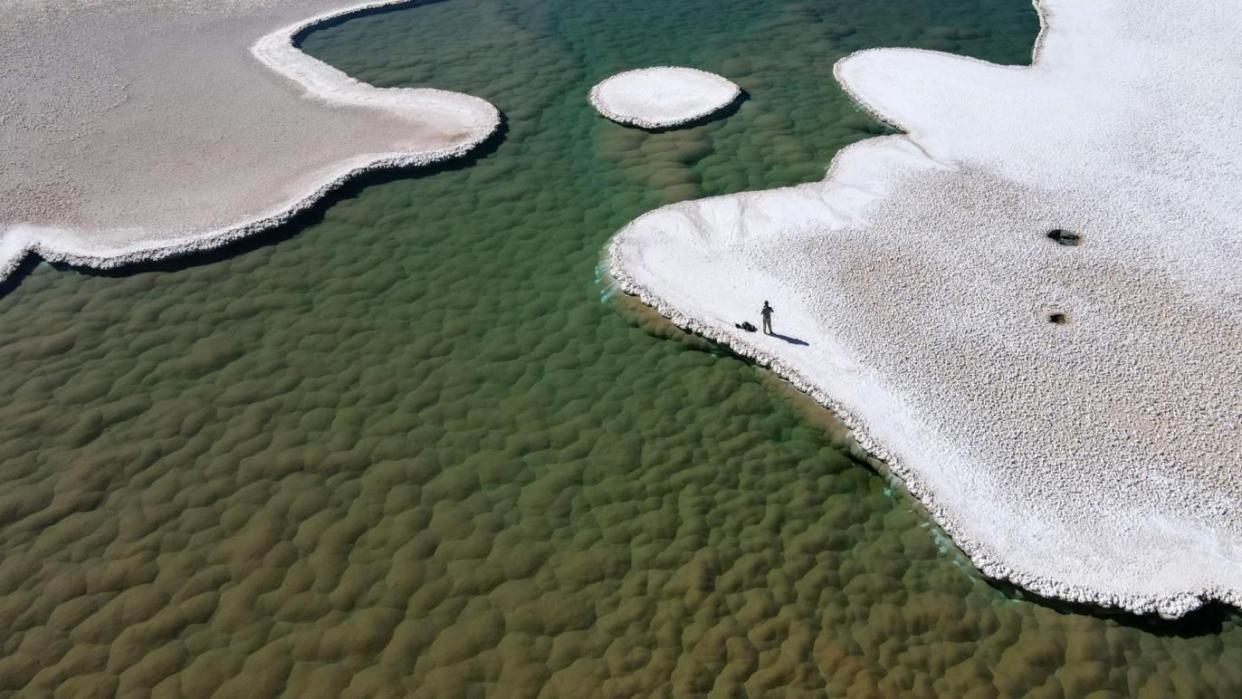A Lost World of Lagoons Has Suddenly Appeared in Argentina

Geologists recently uncovered a unique ecosystem in the high plateau desert of Argentina.
The life found in the area’s lagoons could give clues to how life could have existed on primordial Earth—when our planet had almost nonexistent oxygen in the atmosphere.
The 12-lagoon network features microbial communities that may still be growing, even though they are located in one of Earth’s harshest climates.
Scientists are still discovering unknown and exciting environments on Earth. The latest find—located 12,000 feet above sea level in Argentina’s Puna de Atacama—not only boasts 12 stunning crystal-clear lagoons spread across about 25 acres, but may also hold clues to what the early days of life on Earth (and Mars?) may have looked like.
It’s all thanks to stromatolites—complex microbial communities (formed primarily by microbes called cyanobacteria) that grow giant mounds of rock as they age. This particular stromatolite community is developing unlike any other in the modern world, even amidst the harsh Atacama climate of rare rainfall and unrelenting sun.
“This lagoon could be one of the best modern examples of the earliest signs of life on Earth,” Brian Hynek, a University of Colorado geologist who helped document the unique ecosystem, said in a statement. “It’s unlike anything I’ve ever seen or, really, like anything any scientist has ever seen.”
Finding this alien environment, as Hynek describes it—which was previously entirely unknown, let alone unexplored—was somewhat of an interesting happenstance. After traveling for nine hours on a dirt road to northwest Argentina, Hynek was searching through satellite images of the surrounding desert when he saw what he thought could have been a network of lagoons.
Hynek and microbiologist Maria Farias then hiked several miles to reach the region, at times sinking to their knees in salt slush. Once they arrived at the lagoon network, Hynek said, he knew they’d trekked into the unknown for a reason. Before them were massive stromatolites—mounds of green growth, some up to 15 feet wide and several feet high.
“We think these mounds are actually growing from the microbes,” he said, “which is what was happening in the oldest ones.” The layers are formed from gypsum—common in stromatolite fossils, but absent in almost all modern examples—and include layers of single-celled organisms associated with Earth’s most extreme locations.
Modern stromatolites, most commonly found off the coast of the Bahamas, are relatively small and grow simply by trapping sand. Ancient stromatolites, though, are known to reach 20 feet in height and used various minerals to reach that size. The Atacama lagoon is reminiscent of those ancient examples.
Understanding why and how these mounds have been able to form in Argentina is the next step. The team thinks that the lagoon’s environment may resemble that of an ancient Earth, with salty and acidic waters and extreme levels of solar radiation. This would make this region an area with huge potential for researching the earliest days of life on Earth.
And is could have off-world scientific potential as well. “If life ever evolved on Mars to the level of fossils, it would have been like this,” Hynek said. “Understanding these modern communities on Earth could inform us about what we should look for as we search for similar features in the Martian rocks.”
Unfortunately, the team will need to search for more clues quickly. Acompany has already secured a lease to mine the area for lithium, which would allow drilling to begin shortly. “This entire, unique ecosystem could be gone in a matter of years,” Hynek said. “We’re hoping that we can protect some of these sites, or at least detail what’s there before it’s gone or disturbed forever.”
You Might Also Like

